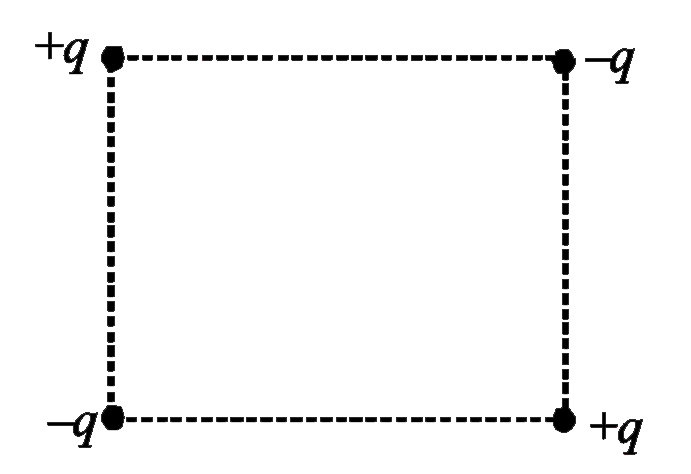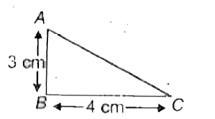If electric field →E is zero at a particular point then potential V at that point.....
Nothing can be said about electric potential at the point. It is not necessary that the electric potential be zero at the point where electric field is zero. It may be zero or non-zero.
Topper's Solved these Questions
- ELECTROSTATIC POTENTIAL AND CAPACITANCE BOOK - MODERN PUBLICATIONCHAPTER - ELECTROSTATIC POTENTIAL AND CAPACITANCE EXERCISE - Tough & Tricky PROBLEMS
10 Videos
- ELECTROSTATIC POTENTIAL AND CAPACITANCE BOOK - MODERN PUBLICATIONCHAPTER - ELECTROSTATIC POTENTIAL AND CAPACITANCE EXERCISE - NCERT FILE Solved (Textbook Exercise)
11 Videos
- ELECTROSTATIC POTENTIAL AND CAPACITANCE BOOK - MODERN PUBLICATIONCHAPTER - ELECTROSTATIC POTENTIAL AND CAPACITANCE EXERCISE - PRACTICE PROBLEMS 5
18 Videos
- ELECTROMAGNETIC WAVESBOOK - MODERN PUBLICATIONCHAPTER - ELECTROMAGNETIC WAVESEXERCISE - CHAPTER PRACTICE TEST
14 Videos
- MAGNETISM AND MATTERBOOK - MODERN PUBLICATIONCHAPTER - MAGNETISM AND MATTEREXERCISE - CHAPTER PRACTICE TEST FOR BOARD EXAMINATION
16 Videos
Similar Questions
If →E equals zero at a given point mus V equal for that point .
View SolutionOn the basis of your understanding of the following paragraph and the related studied concepts.
An equipotential surface is a surface with a constant value of electric potential at all points on the surface. The component of electric field parallel to an equipotential surface is zero, as the potential does not change in this direction. Thus, the electric field is perpendicular to the equipotential surface at each point of the surface. Further, say the direction of electric field electrical potential gradually fall with distance.
If electric potential at origin point O be 100 V, then for electric field specified in part (b), draw equipotential surfaces corresponding to potentials 80 V, 60 V and 40 V respectively.
View Solution
Knowledge Check
Let V0 be the potential at the origin in an electric field →E=4ˆi+5ˆj. The potential at the point (x,y) is
AV0−4x−5yBV0+4x+5yC4x+5y−V0D−4x−5yIf electric potential is zero, the →E are:
AzeroBnot zeroCinsufficient formationD∞At a particular point, electric field depends upon
Asource charge Q onlyBtest charge q0 onlyCboth Q and q0Dneither Q nor q0
On the basis of your understanding of the following paragraph and the related studied concepts.
An equipotential surface is a surface with a constant value of electric potential at all points on the surface. The component of electric field parallel to an equipotential surface is zero, as the potential does not change in this direction. Thus, the electric field is perpendicular to the equipotential surface at each point of the surface. Further, say the direction of electric field electrical potential gradually fall with distance.
Draw equipotential surfaces around an isolated positive point charge + q. Mark direction of electric field →E also.
View Solution4Statement - 1 : The electric potential and the electric field intensity at the centre of a square having four fixed point charges at their vertices as shown in figure are zero.
Statement - 2 : If electric potential at a point is zero then the magnitude of electric field at that point must be zero.

View SolutionABC is a right anlged triangle situated in a uiform electric field →E which is in the plane of the traingle . The points A and B are at the same potential of 15 V while the point C is at a potential of 20 V. AB = 3cm and BC = 4 cm . The magnitude of electric field is (in S.I . Units )

View SolutionSTATEMENT-1 : At a point electrostatic field is zero, then potential at that point may be zero .
and
STATEMENT-2 : Negative of the potential gradient is equal to electrostatic field.
View SolutionThe electric field strenth vector is given by E=2.5xˆI+1.5yˆ.The potential at point (2,2,1) is (considering potential at origin to be zero)
View Solution